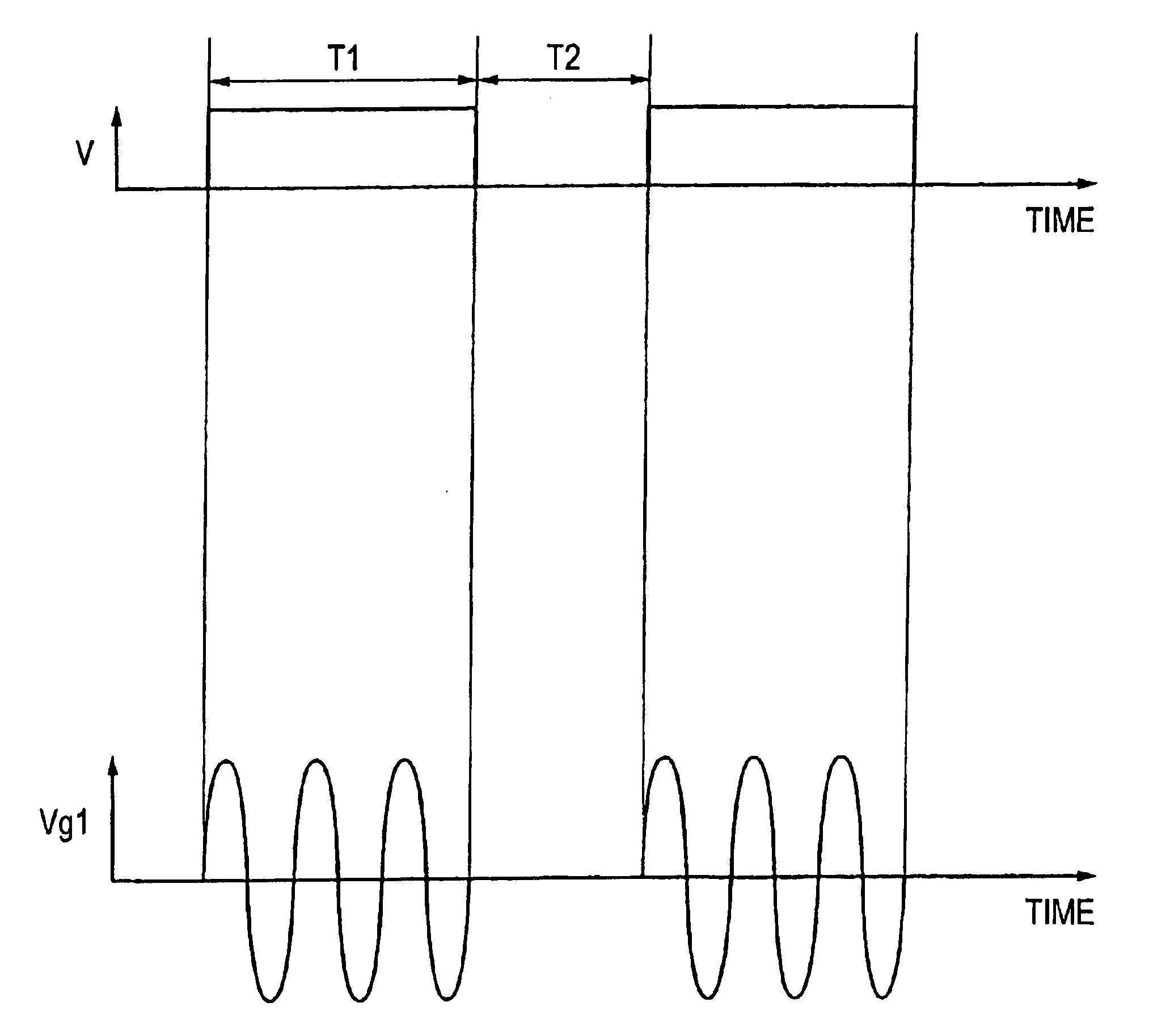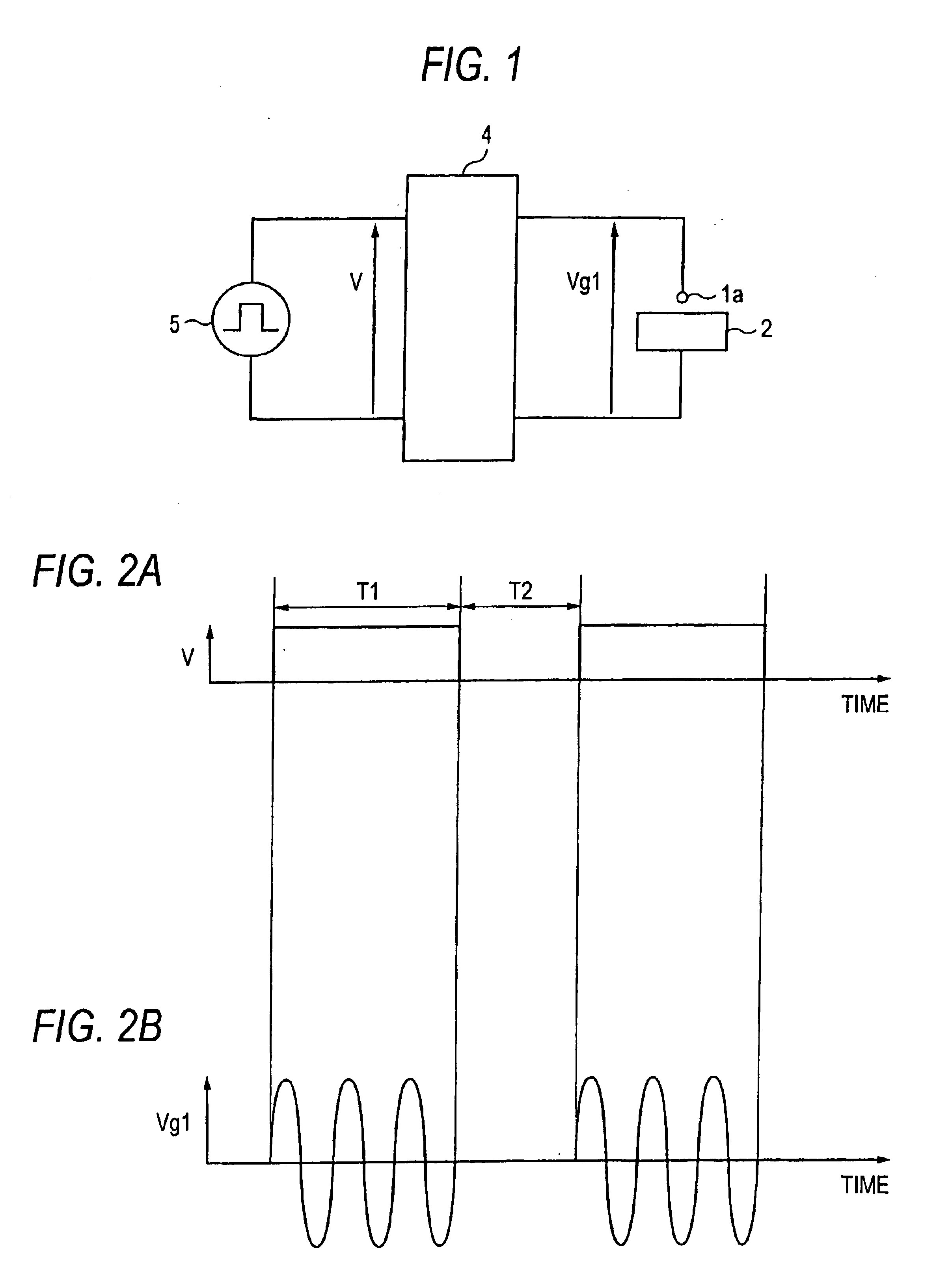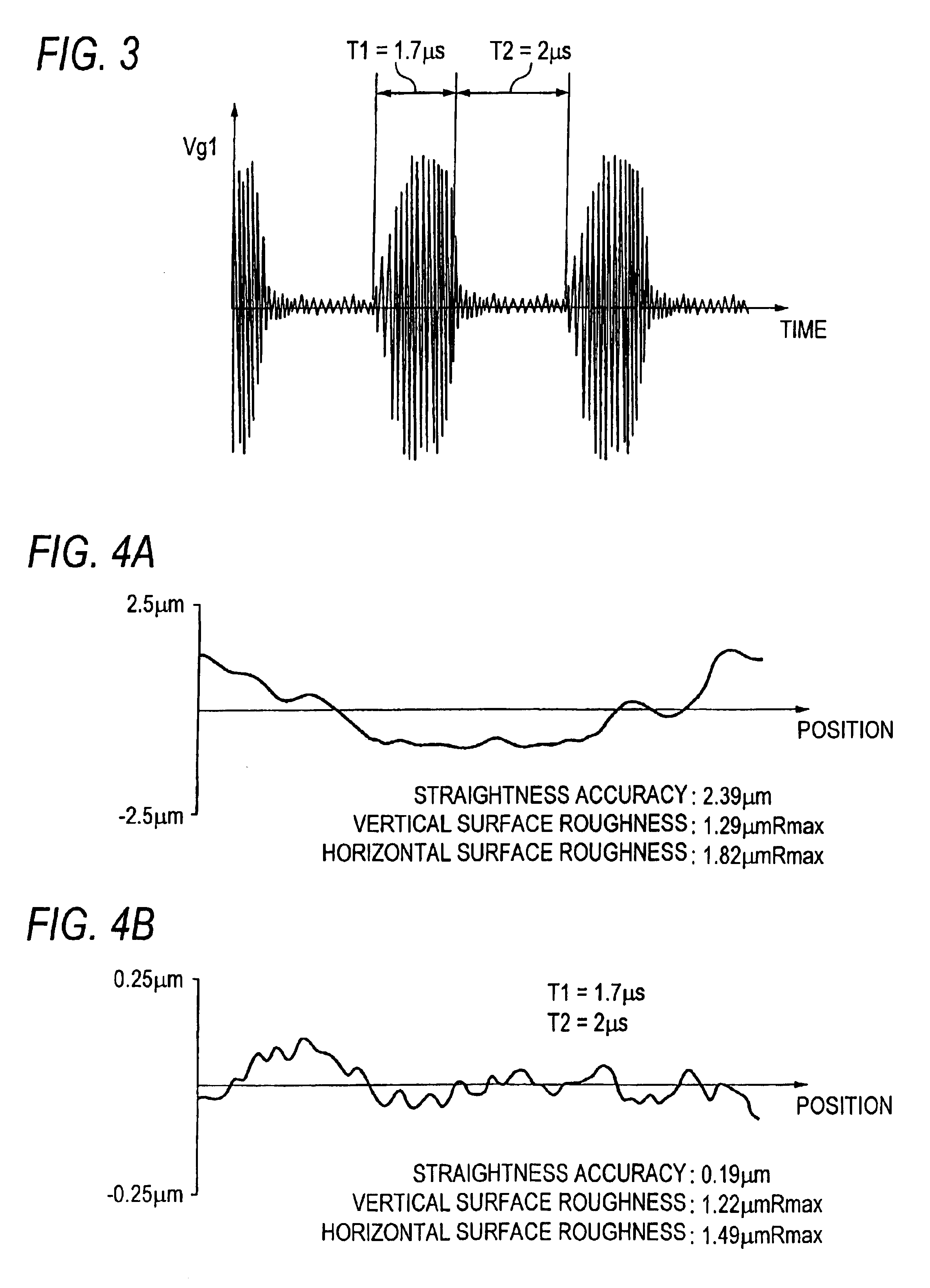Power supply unit for wire electrical discharge machining and method of wire electrical discharge machining
- Summary
- Abstract
- Description
- Claims
- Application Information
AI Technical Summary
Benefits of technology
Problems solved by technology
Method used
Image
Examples
first embodiment
[0040]FIG. 1 is a block diagram of the power supply unit for wire electrical discharge machining in accordance with a first embodiment of the invention. In the drawing, reference numeral 1a denotes a wire electrode; 2, a workpiece; 4, a high-frequency oscillation and amplification circuit; and 5, a pulse power supply. As an intermittent voltage V is inputted from the pulse power supply 5 to the high-frequency oscillation and amplification circuit 4, an ac high-frequency voltage with a voltage Vg1 is applied between the wire electrode 1a and the workpiece 2.
[0041]FIGS. 2A and 2B are conceptual diagrams for explaining the voltage waveform V of the pulse power supply 5 and the bath voltage waveform Vg1 in the power supply unit for wire electrical discharge machining in accordance with the first embodiment of the invention. An ac high-frequency voltage is applied intermittently between the electrode and the workpiece in synchronism with a predetermined time T1 during which a pulse volta...
second embodiment
[0055]FIG. 6 is a circuit diagram of a power supply unit for wire electrical discharge machining in accordance with a second embodiment of the invention. In the drawing, reference numeral 1a denotes the wire electrode; 2, the workpiece; 3, a dc:power supply; 4, the high-frequency oscillation and amplification circuit; and 6, a resistance device. Numerals 7a and 7b denote resistors; 8a and 8b, diodes; and 9a and 9b, FETs. As a predetermined voltage is inputted from the dc power supply 3 to the high-frequency oscillation and amplification circuit 4, an ac high-frequency voltage with a voltage Vg2 is applied between the wire electrode 1a and the workpiece 2. The FETs 9a and 9b in the resistance device 6 connected in parallel to the electrode gap are arranged to be capable of being independently driven by external signals S1 and S2. In addition, the diode 8a is connected in series to the resistor 7a in a direction in which the current flows when the polarity of the wire electrode 1a is ...
third embodiment
[0059]FIG. 8 is a circuit diagram of the power supply unit for wire electrical discharge machining in accordance with a third embodiment of the invention, and the same reference numerals as those in FIG. 6 in accordance with the second embodiment denote identical or corresponding portions. In FIG. 8, reference numeral 5 denotes the pulse power supply; 10, a resistance device; 11, a resistor. Numerals 12a and 12b denote diodes; and 13a and 13b, FETs. As a predetermined voltage is inputted from the dc power supply 3 to the high-frequency oscillation and amplification circuit 4, an ac high-frequency voltage Vg3 is applied between the wire electrode 1a and the workpiece 2. The FETs 13a and 13b in the resistance device 10 connected in parallel to the electrode gap are arranged to be capable of being simultaneously driven by the pulse power supply 5. At the time of the reverse polarity, the current flows across the resistor 11 through the FET 13a and the diode 12b of the FET 13b, while at...
PUM
| Property | Measurement | Unit |
|---|---|---|
| Time | aaaaa | aaaaa |
| Time | aaaaa | aaaaa |
| Electric potential / voltage | aaaaa | aaaaa |
Abstract
Description
Claims
Application Information
 Login to View More
Login to View More - R&D
- Intellectual Property
- Life Sciences
- Materials
- Tech Scout
- Unparalleled Data Quality
- Higher Quality Content
- 60% Fewer Hallucinations
Browse by: Latest US Patents, China's latest patents, Technical Efficacy Thesaurus, Application Domain, Technology Topic, Popular Technical Reports.
© 2025 PatSnap. All rights reserved.Legal|Privacy policy|Modern Slavery Act Transparency Statement|Sitemap|About US| Contact US: help@patsnap.com



